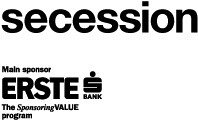Rosalind Nashashibi: DEEP REDDER
Fiona Connor: #8, Closed for Installation, Sequence of Events
June 27–September 1, 2019
Friedrichstraße 12
1010 Vienna
Austria
Hours: Tuesday–Sunday 10am–6pm
T +43 1 587530710
F +43 1 587530734
presse@secession.at
The Vienna Secession is pleased to announce the exhibitions by Nora Schultz, Rosalind Nashashibi and Fiona Connor.
Nora Schultz
would you say this is the day?
Everyday objects, language, recording systems, and cultural displacements play key roles in Schultz’s art, as do the observation and critical activation of the exhibition space and the artist herself as the work’s producer. Recently, she has employed various cameras (GoPro, video drone, etc.) as automated “co-producers” whose contributions to the creative process she cannot fully control and which have their own internal dynamics and probe the artist/author’s changing position vis-à-vis its operation. In performative interactions, she often develops large installations that involve and take possession of the venue’s structure and sometimes project beyond its confines.
The exhibition at Secession will be the realization of a proposal in several parts that Schultz submitted within the accompanying publication. In the sense of would you say this is the day?, distance is a means of production. Closely following the instructions, drawings, renderings and notation of the proposal, the exhibition will be a traveling show, an all-encompassing installation in which Atlas and The Day appear as the central figures.
Nora Schultz was born in Frankfurt in 1975 and lives and works in Boston, Mass.
Rosalind Nashashibi
DEEP REDDER
In her exhibition DEEP REDDER, Rosalind Nashashibi presents paintings and a new film in two parts, the fruit of a sustained, process-based, and ongoing meditation on social norms of family life.
Both segments of the film are inspired by Ursula Le Guin’s novella The Shobies’ Story (1990): Set in the science fiction and fantasy writer’s sprawling fictional universe, the plot revolves around the experiences of a multigenerational group testing a novel form of space travel based on nonlinear time. The story acts as a lens through which the film, featuring Nashashibi herself, her children, and close friends, reflects on how a group’s sense of community is built and then fractured when their movement is non-sequential and beyond their understanding. Appearing in the role of the film’s narrator, Nashashibi intertwines the filmic action with the literary source to raise philosophical and psychological questions concerning interpersonal relationships.
Besides Le Guin’s novella, the artist drew on a second literary source: the I Ching, which she consulted before she started shooting, using the response of the Chinese divination manual and book of wisdom to shape the making of the film.
Nashashibi’s paintings in the exhibition are even more direct equivalents of her own experiences of being in the world, of standing in two states, with feet and ankles in water and legs dry, of a lamb craning its neck upwards, or a calf with its face hidden from our view and yet lit by moonlight.
Rosalind Nashashibi was born in Croydon, England, in 1973 and lives and works in London.
Fiona Connor
#8, Closed for Installation, Sequence of Events
Fiona Connor makes sculptural installations where she replicates objects and structures of everyday life. Her recreations of noticeboards, drinking fountains, furniture, and doors not only draw attention to these widely overlooked items and their forms, they also reconstruct the histories and micro-economies of communities. Many of her works respond to the infrastructure of the places and environments where she exhibits them, to disclose the underlying mechanisms that may inform our interactions with art and art institutions.
For her exhibition at the Secession, #8, Closed for Installation, Sequence of Events, Connor has developed a body of work that comprises 23 bronze objects that resemble tools commonly used in the installation process of an exhibition: a measuring tape, ruler, pencil, dolly, etc. The sculptures work with the rules of a certain period of labour and maintenance, replicating tools that look very similar all around the world and are usually out of sight at the opening of the exhibition. The sculptures reveal the artist’s deep curiosity about how things are made. They play with the ambiguity of the handmade and the manufactured, as well as with the boundaries of an art object.
Fiona Connor was born in Auckland in 1981 and lives and works in Los Angeles.
An artist’s book is published in conjunction with each exhibition.
The exhibition program is conceived by the board of the Secession.



